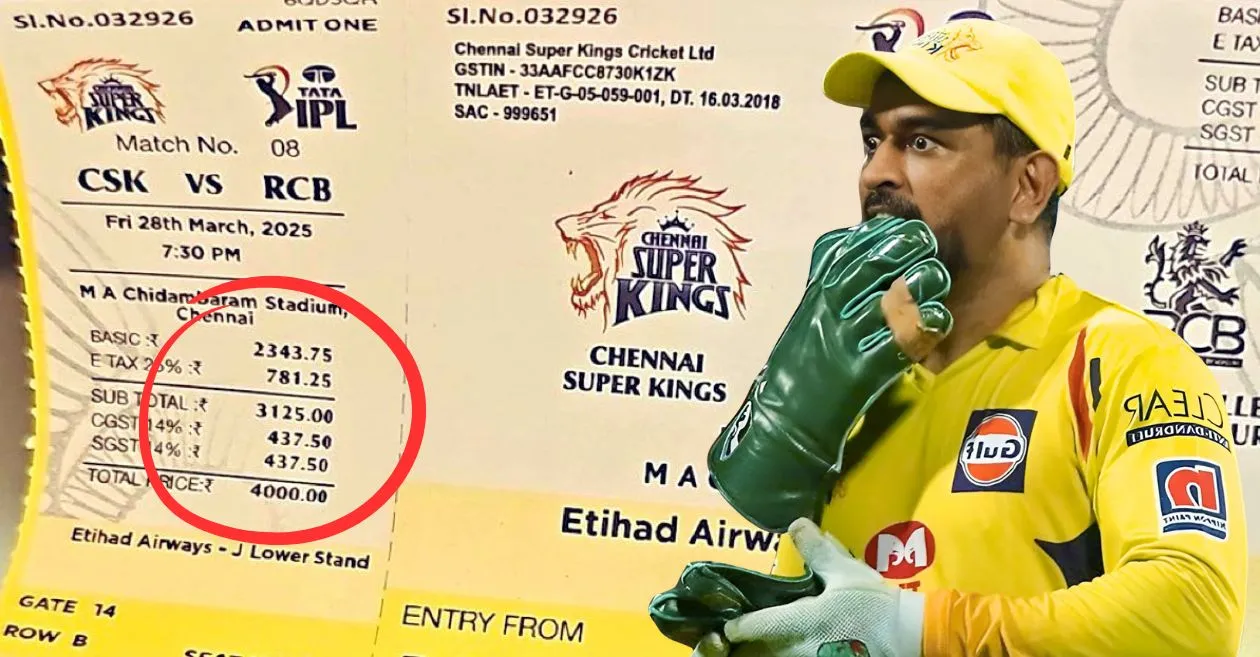Table of Contents
Indian Premier League (IPL) is not just a cricketing extravaganza; it’s a masterclass in taxation. While fans flock to stadiums to witness their favourite players in action, most remain unaware of the complex tax structure embedded in their ticket prices. A ₹4,000 IPL ticket isn’t just about the thrill of the match—it’s also a lesson in India’s layered taxation system, where taxes are stacked one on top of another.
Unveiling the price tag: What you really pay
When you purchase an IPL ticket priced at ₹4,000, you’re not merely paying for your seat in the stadium. The actual base price of the ticket is significantly lower—₹2,343.75 to be precise. The remaining amount is composed of two major taxes: Entertainment Tax and Goods and Services Tax (GST). Here’s a detailed breakdown:
Base Price: ₹2,343.75
Entertainment Tax (25%): ₹781.25
Subtotal: ₹3,125.00
GST (28% on Subtotal): ₹875
- Central GST (CGST): ₹437.50
- State GST (SGST): ₹437.50
The final GST amount is applied not on the base price but on the subtotal, which already includes Entertainment Tax. This cascading effect means you’re effectively paying tax on another tax—a structural quirk that inflates ticket costs significantly.
The hidden taxation: Cascading effect explained
The cascading taxation system arises from how Entertainment Tax and GST are applied sequentially rather than being integrated. Ideally, GST should be calculated on the base value of the ticket alone. However, when states add Entertainment Tax first, GST is levied on the subtotal that includes this tax. This results in what experts call “tax-on-tax,” increasing the effective tax burden on consumers.
For instance, while Entertainment Tax is officially 25%, its effective rate becomes 33.33% of the base value due to this compounding effect. Similarly, GST adds another layer of complexity by taxing an already inflated subtotal.
Why your ₹4,000 IPL ticket is a mini masterclass in India’s ‘Tax-on-Tax’ policy playbook.
You’re not just paying to watch the match. You’re funding a policy loophole.#IPL2025 #GST pic.twitter.com/HwvF0jLESr
— efiletax (@efile_tax) March 29, 2025
Global comparisons: How India stacks up?
India’s taxation model for event tickets stands out globally for its complexity:
- United States: No GST; occasional amusement tax applies.
- United Kingdom: A flat VAT rate of 20%.
- India: Entertainment Tax + GST layered sequentially.
This dual-taxation system makes IPL tickets more expensive compared to similar events abroad, where simpler tax structures are employed.
Also READ: List of Indian players to complete 8,000 runs in T20 cricket ft. Suryakumar Yadav
Why are IPL tickets so expensive?
Beyond taxation, several factors contribute to the high cost of IPL tickets:
- Dynamic Pricing: Franchises use surge pricing strategies based on demand and match popularity. High-profile matches featuring stars like MS Dhoni or Virat Kohli often command premium rates.
- Infrastructure Costs: Teams justify higher ticket prices by citing expenses related to stadium upgrades and maintenance.
- Revenue Optimization: While gate collections are not the primary revenue source for franchises (broadcast deals dominate), ticket sales remain crucial for maximizing internal earnings.
The cascading taxation problem isn’t exclusive to IPL matches. Concerts, stand-up comedy shows, and other entertainment events face similar issues under India’s layered tax regime. Despite the promise of simplified taxation under GST’s “one nation, one tax” framework, these events continue to grapple with hidden costs that burden consumers.
A ₹4,000 IPL ticket is far more than an entry pass—it’s a microcosm of India’s complex taxation policies. Fans unknowingly fund a system that stacks taxes in a cascading manner, inflating costs beyond what seems reasonable. As franchises capitalize on demand through dynamic pricing and governments impose layered taxes, consumers bear the brunt.
